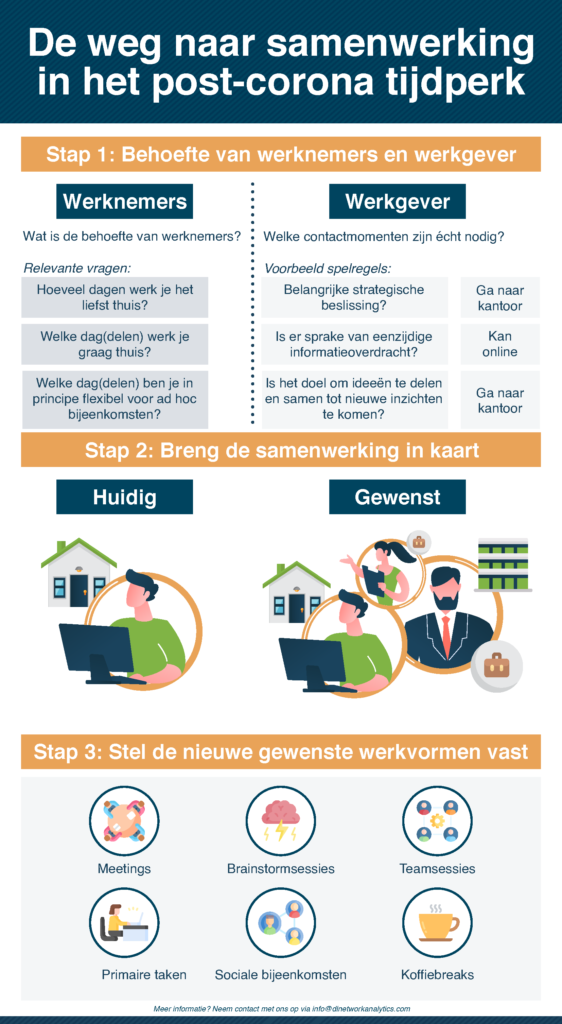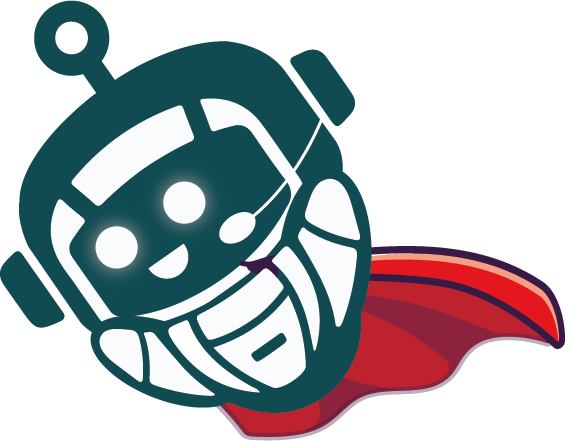While it is clear that most companies do not want to go all the way back to the old ways, neither is working completely digitally. This means that the organization must move toward a hybrid form of working. A roadmap for this is useful to provide guidance and direction for setting up this new form of (collaborative) work.
Below, we present a roadmap for determining what this new way of working looks like for your organization.

Step 1: Needs of employees and employer
It all starts with the needs of employees and employer. Every organization is different, so are the people who work there and the most appropriate forms of work. The mission, vision and goals of the organization are the starting point for this. So the first step is: Identify the needs of employees as well as the employer. What do employees really want and what is the minimum required to continue serving customers optimally and remain innovative in this rapidly changing world? Above all, make it concrete: how many hours at home, how many in the office, and what hours/days at home and in the office. From the employer’s perspective, this means answering the question: Which physical contact moments are and which are not really necessary for good business? Game rules can then be attached to this. For example: Meetings where someone shares (one-sided) theoretical knowledge are fine online. In turn, a management meeting with important strategic decision-making on the agenda lends itself much less well to a digital setting.
As for the balance between employees and employers, flexibility is not a one-way street. Against employer flexibility, flexibility should also be expected from employees and vice versa.
Step 2: Map the collaboration
Map current and desired collaboration using organizational network analysis. With whom does each employee work most closely? Who would each employee like to spar with more often? What connections outside your own team are relevant to creativity and innovation? Visualizations are used to reveal important patterns in collaboration. Then these patterns can be purposefully broken or modified to achieve the desired cooperation. Nice touch is that as part of the analysis the average time spent is included, so the effectiveness of the new forms of work also gets the attention it deserves.
Step 3: Establish the new desired forms of work.
Step 1 and Step 2 clarify employee and employer needs and current and desired cooperation. The final step is to determine what practical forms of work best fit this. This means that each organization, department or team considers which meetings, brainstorming sessions, team sessions, primary tasks and social gatherings can take place when, how (physical/online) and with what frequency. In this way, structure can be restored to cooperation and forms of work are introduced that make both employee and employer happy.













